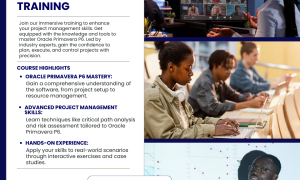
TL;DR: In your 30s, lock in the big three: 1) save 15–20%+ of income, 2) invest automatically in low-cost index funds with an 80/20 or 70/30 stock-bond mix, 3) capture your full employer match. Build a 3–6 month emergency fund, eliminate high-interest debt, and increase contributions by 1–2% every year. Finish with proper insurance and an estate basics check.
Why your 30s are the perfect decade to set up retirement
Retirement Planning: Compounding does the heavy lifting—but only if you start early. Ten extra years invested can mean ~2× the ending nest egg versus starting at 40 (same monthly contribution, long-run market returns assumed). Your 30s are also when income typically rises; channeling a slice of each raise into investments makes wealth building almost effortless.
“Small, automated steps now beat heroic efforts later.”
David Bach
Step-by-step retirement planning: exactly what to do (and in what order)
1) Set a clear retirement number
- A quick rule of thumb: Annual spending at retirement × 25 (assuming ~4% withdrawal rule).
- Example: If you’ll want ₦9.6M / $12k per year, target ≈ ₦240M / $300k invested (illustrative only).
Emergency Funds 101 – Emergency Funds Basics: How to Protect Yourself From Life’s Disasters
2) Choose your target savings rate
- Baseline: 15–20% of gross income (more if starting later or aiming for earlier retirement).
- Power-up: Each time you get a raise, increase your contribution by 1–2% (you won’t feel it).
Calculate – How much to save monthly to hit my number?
3) Build (or top up) your emergency fund
- Goal: 3–6 months of essential expenses.
- Park it in a separate high-yield savings (not in your investment account).
- Why it matters: it keeps you invested during setbacks (job change, medical, etc.).
Top 7 Financial Mistakes People Make (and How to Avoid Them)
4) Eliminate high-interest debt strategically
- Use Avalanche (highest APR first) or Snowball (smallest balance first—more motivating).
- Debt gone? Redirect those payments to retirement contributions.
Is My Side Hustle Tax-Deductible? AVA’s Exclusive Shocking Truth
5) Always capture your full employer match (if available)
- A match is instant, risk-free return.
- If a workplace plan/pension exists (e.g., 401(k), workplace pension, RSA/pension in your country), contribute at least enough to get 100% of the match.
6) Pick a simple, diversified investment mix
- A practical starting point at 30–39:
- Aggressive: 80% global stocks / 20% bonds
- Moderate: 70% global stocks / 30% bonds
- Use low-cost index funds/ETFs (total market + international + bonds).
- Rebalance once a year (or set a 5% band rule).
7) Automate everything towards your retirement planning
- Auto-transfer payday → investments.
- Turn on auto-invest into chosen funds.
- Schedule auto-increase of contributions (1–2% annually or at raise time).
8) Optimize taxes (use the right account types) for Retirement Planning
- Prioritize tax-advantaged options available in your country:
- Workplace plan/pension up to match (and beyond if fees are reasonable)
- Individual retirement account / personal pension (consider tax-deferred vs. tax-free options)
- Taxable/brokerage for surplus investing and flexibility
- Keep low-turnover, broad-market funds for tax efficiency in taxable accounts.
9) Protect your plan for Retirement Planning (insurance & legal basics)
- Health insurance and disability income insurance (protect your most valuable asset: your income).
- Term life insurance if someone depends on your income.
- Will + named beneficiaries on all accounts.
- Secure passwords and enable MFA on financial accounts.
10) Beat lifestyle creep with “pay-yourself-first”
- Route a set 50%/30%/20% of every paycheck to investments before expenses.
- Add fun money to your budget—but cap it.
- Keep big purchases tied to savings goals (not impulse).

How early matters in retirement planning
Relative growth from the same monthly contribution (assuming long-run market returns):
- 30 Yrs → ~2.2× the ending amount vs. starting at 40
- 35 Yrs → ~1.5× vs. starting at 40
- 40 Yrs → 1× (baseline)
What to do this month (a 30-day checklist)
- Open/confirm workplace retirement plan, set contribution to hit full match
- Set automatic monthly transfer to investments (date = payday)
- Pick a target allocation (80/20 or 70/30) using low-cost index funds
- Build or top up emergency fund to next milestone (e.g., +₦100k / $200 this month)
- Choose Avalanche/Snowball; roll any paid-off debt into contributions
- Add 1–2% auto-increase at your next raise date
- Review insurance (health, disability, term life) and set/update beneficiaries
Common mistakes to avoid in your 30s
- Waiting for “extra money” to start—start tiny, automate, scale up
- Picking funds by past performance—focus on fees + diversification
- Cash-heavy portfolios “for safety”—inflation is the stealth risk
- Ignoring employer match or leaving before vesting without a plan
- Skipping disability insurance—income is the engine of your plan
FAQs in Retirement Planning
1) How much should I save for retirement in my 30s?
Aim for 15–20% of gross income as a starting point. If you’re starting at 35+, push higher or plan to retire a bit later.
2) Is 80/20 too aggressive in my retirement planning?
If you have 25–35 years until retirement and a solid emergency fund, 80/20 is common. If market swings keep you up at night, 70/30 is fine—staying invested beats chasing returns in retirement planning.
3) Should I pay off debt or invest first?
Capture employer match first (free money), then prioritize high-interest debt (e.g., credit cards). After that, increase investments.
4) Do I need a financial advisor for my retirement planning?
Not always. A simple, low-cost index strategy works for many. Consider advice for complex taxes, equity comp, real estate, or when you need accountability.
5) What if I’m starting my retirement planning late?
Raise your savings rate, extend your timeline by a few years, and keep fees low. Automate and add 1–2% every raise.
Ready to invest with confidence?
Download the Terces Finance Investment Guide
Clarity on account types, fund selection, and how to automate your plan—step by step.
Get a Free Guide





